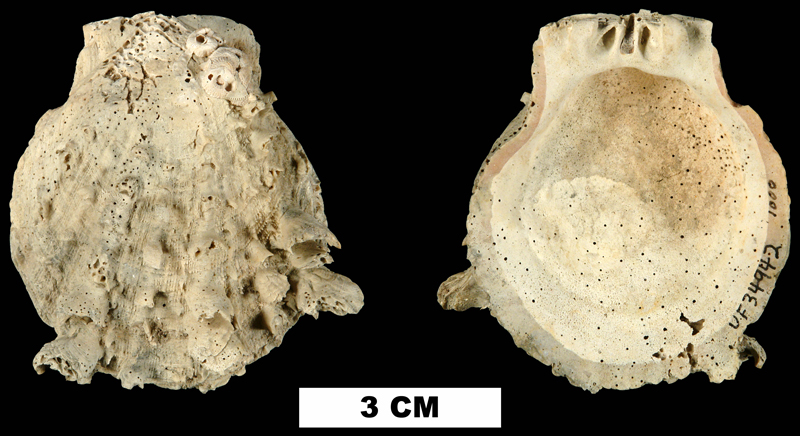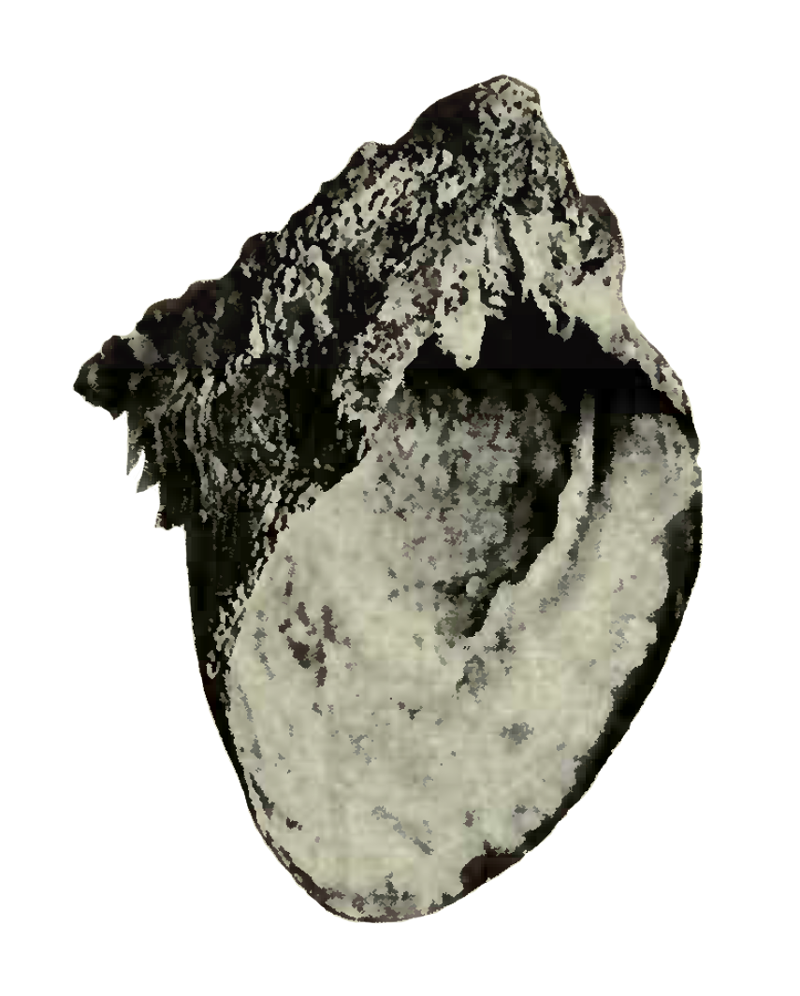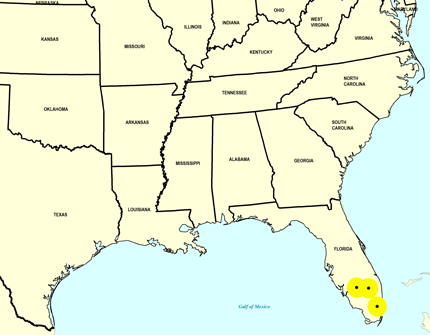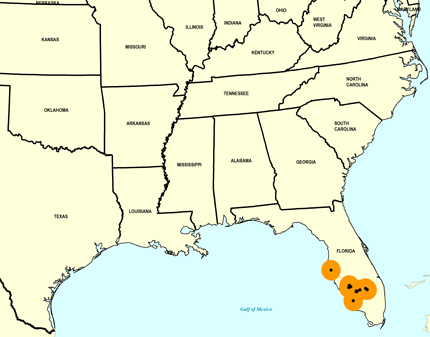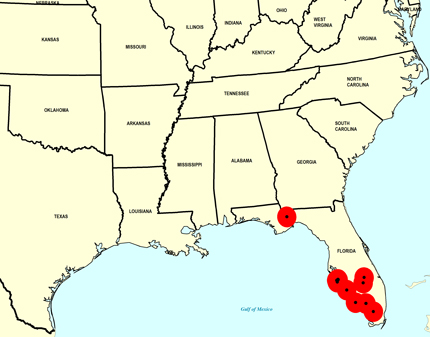
Spondylus rotundatus
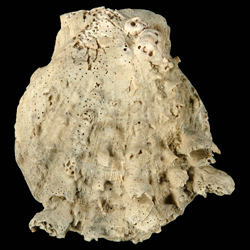
- Phylum: Mollusca
- Class: Bivalvia
- Order: Pectinida
- Family: Spondylidae
- Genus: Spondylus
- Species: Spondylus rotundatus (Heilprin, 1886)
Geological Range
Late Pliocene to Middle Pleistocene; Extinct.
Paleogeographic Distribution
Southern Florida to northern Florida.
Remarks
Original Description (from Heilprin, 1886, p. 99):
"Shell (known only by the larger valve) capacious, orbicular below the hinge-line, distinctly auriculated; hinge-line triangular, pyramidal, the beak acute, laterally twisted at the apex, traversed by a median slit; cartilage-pit profound, reaching about half-way to the apex; cardinal teeth powerful, slightly spreading; external surface coarsely ornamented with irregular squamous ribs and intermediate scaly fine lines, the (imbricated) scales on the latter drawn out into flattened spines or echinations.
Height to apex, 3.5 inches; greatest width, 2.5 inches.
A solitary, perfectly preserved valve from the banks below Fort Thompson.
This species is quite distinct from any form, either recent or fossil, with which I am acquainted."
Stratigraphic Occurrences
- Middle Pleistocene
- Bermont Formation (S. FL)
- Early Pleistocene
- Caloosahatchee Formation (S. FL)
- Late Pliocene
- Jackson Bluff Formation (N. FL)
- Tamiami Formation (Pinecrest Beds) (S. FL)
